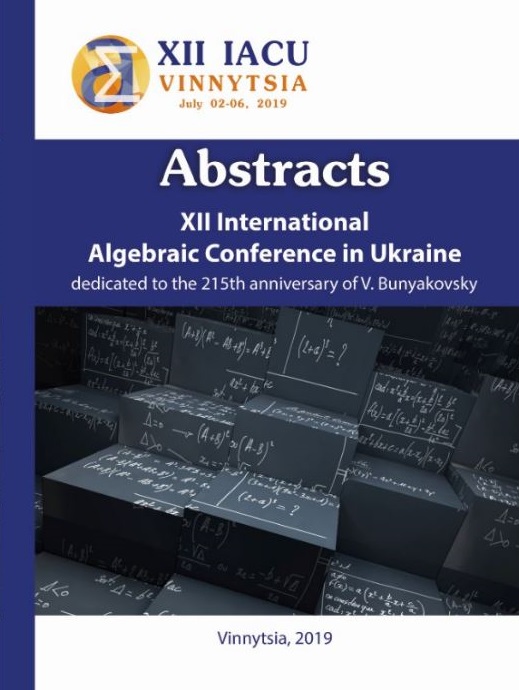Classes of finite rings.
Keywords:
Finite ring, formation, lattice of formations, algebraic lattice, modular latticeAbstract
The concept of formation appeared first in the 1960s in connection with finite solvable groups [1]. Further research showed that formations are of general algebraic nature and can be applied to the study of not necessarily solvable finite and infinite groups, Lie algebras, universal algebras and even of a general algebraic system [2].
References
W. Gasch.utz, Zur Theorie der endlichen aufl.osbaren Gruppen [On the theory of finite solvable groups], Math. Z. 80 (1963) no. 4, 300–305 (in German).
L.A. Shemetkov and A.N. Skiba, Formations of Algebraic Systems, Sovremennaya Algebra, Nauka, Moscow, 1989 (in Russian).
K. Doerk and T. Hawkes, Finite Soluble Groups, De Gruyter Expositions in Mathematics 4 W. de Gruyter, Berlin, 1992.
G. Bini and F. Flamini, Finite Commutative Rings and Their Applications, The Springer International Series in Engineering and Computer Science 680, Kluwer Academic Publishers, Boston, 2002.
A. Tsarev, On classes of finite rings, Revista de la Uni.on Matem.atica Argentina (2020): In press.
Ed.: A. Bouchachia, E. Lughofer and D. Sanchez, Online Fuzzy Machine Learning and Data Mining, Information Sciences 220 (2013) 1–602.
W. Liu, Fuzzy invariant subgroups and fuzzy ideals, Fuzzy Sets and Systems 8 (1982) 133–139.

